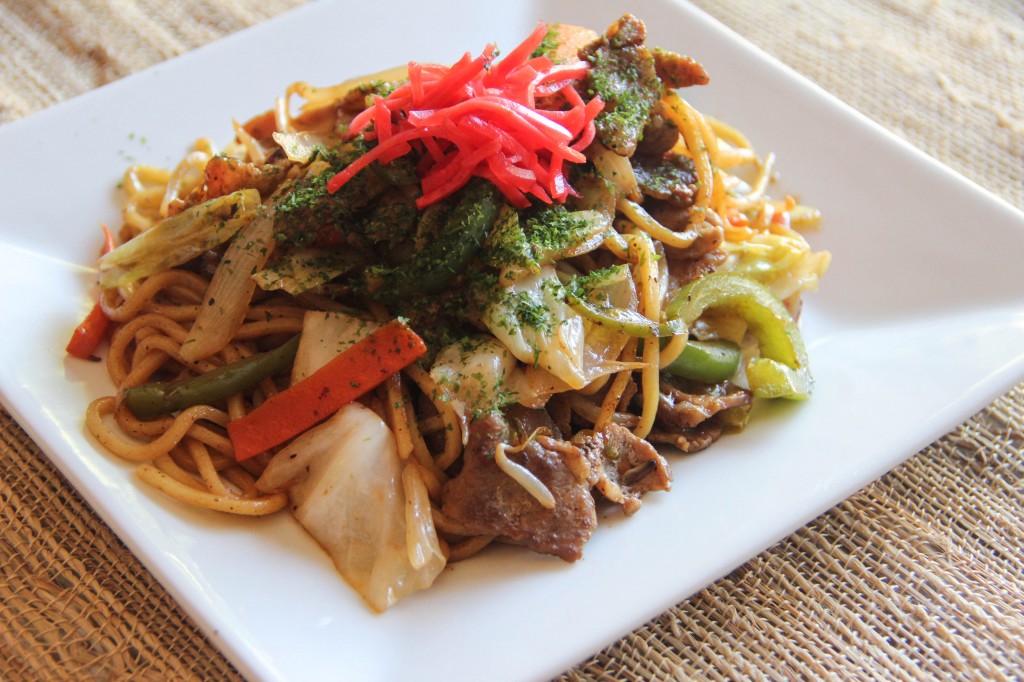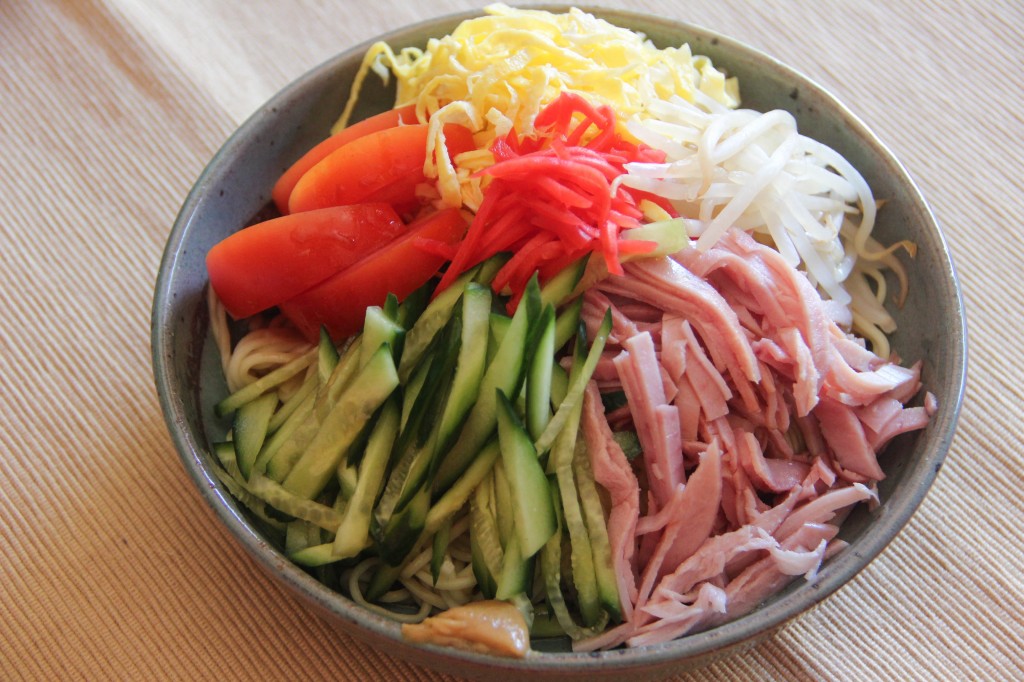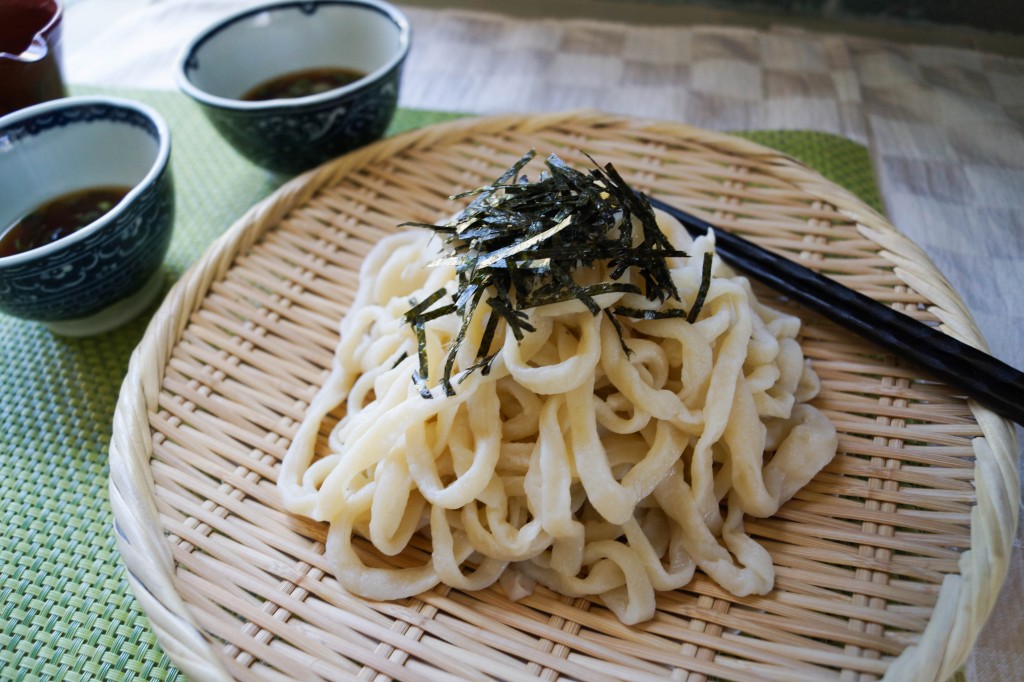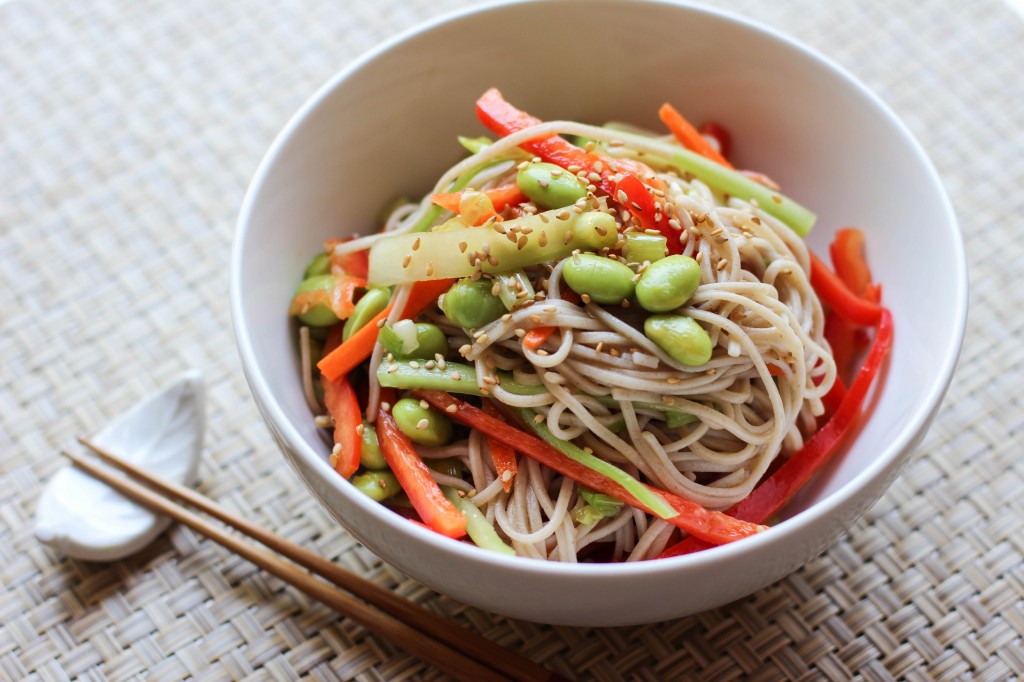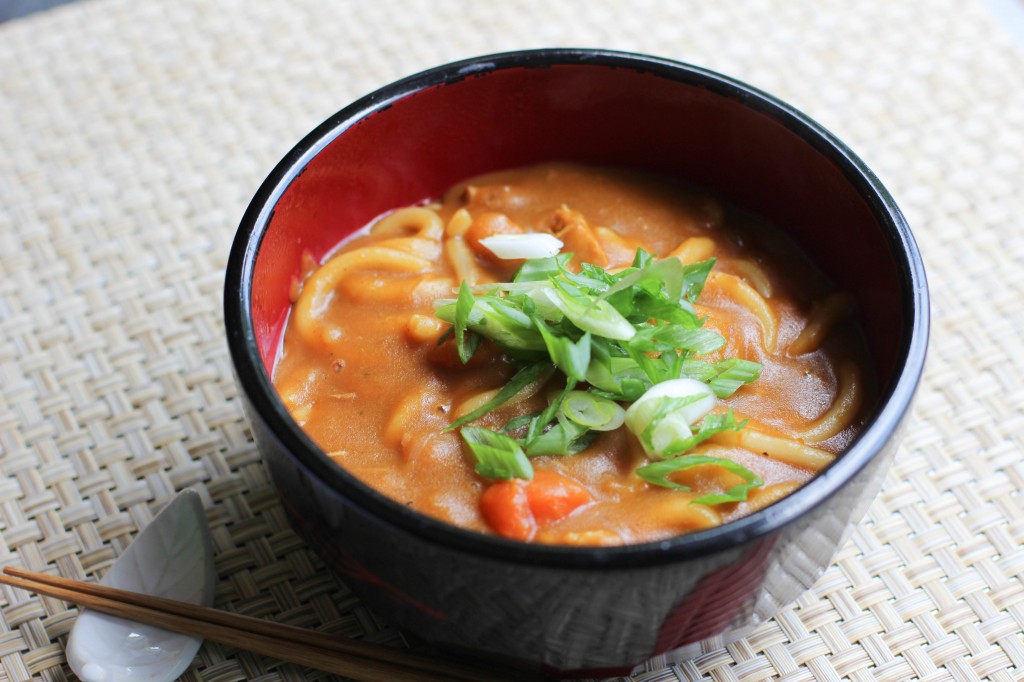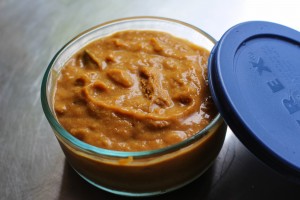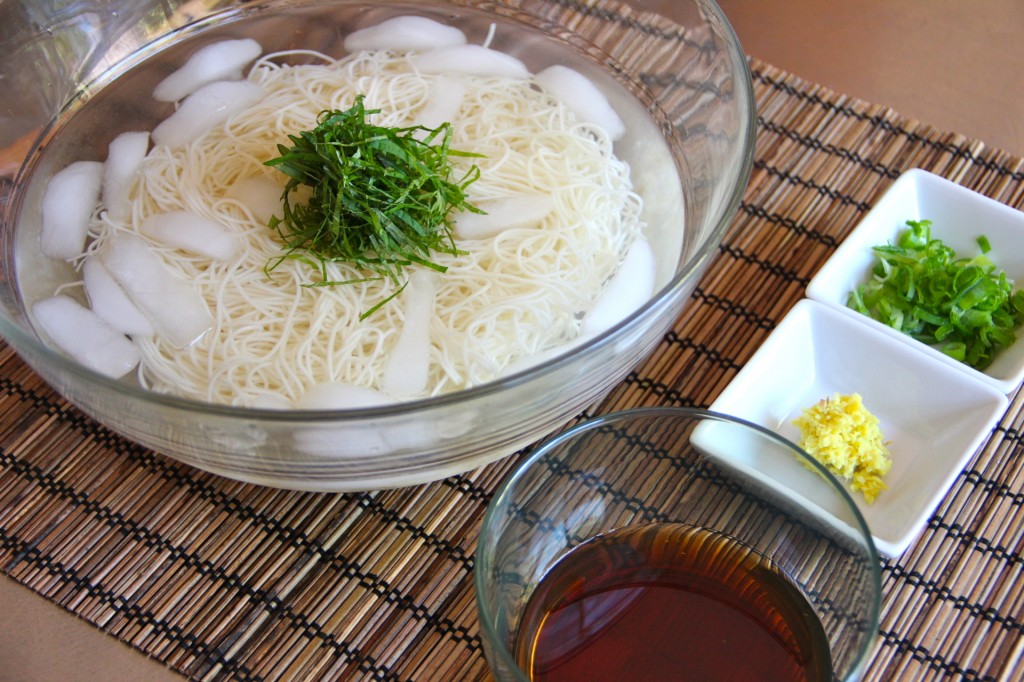Yakisoba is Japanese stir fried noodles. It is served with Yakisoba sauce, similar to Tonkatsu or Okonomiyaki sauce. Yakisoba is usually fried with sliced pork and vegetables like cabbage and bean sprouts. It is a very popular casual food (or snack) everyone likes in Japan. You can find Yakisoba at many places like Okonomiyaki restaurants, festivals, supermarket delis, and of course, home.
Hiyashi Chuka or Reimen (冷やし中華, 冷麺) are cold Chinese style noodles with a sweet tangy sauce. Hiyashi Chuka is served at Ramen restaurants in Japan only during summer. Chuka Men (中華麺), wheat flour noodles that are the same kind in Ramen, are used in Hiyashi Chuka. The light and refreshing taste of this dish, on top of the coldness itself, make this the perfect food for hot summer days.
Udon are Japanese wheat noodles. They are made from all purpose flour, water and salt. Very simple affair, so it seems. Japanese Udon artisans make Udon that look like the ones made by machines. You can see those artisans making Udon noodles through the window at the front of good Udon restaurants. It is actually pretty amazing to watch. Udon is sometimes eaten hot in seasoned broth, but other times, it is eaten cold and dipped in sauce. It is an extremely popular lunch food in Japan and also in the US. A lot of Japanese restaurants in the US serve Udon and stores sell the noodles for home cooking, but you can make it at home. And not just the dish, I mean you can really make the Udon noodles themselves.
Soba noodles are a very popular lunch food in Japan. They are usually served chilled with a dipping sauce (Zaru Soba) or hot with a dashi broth. As we mentioned in our recent Zaru Soba post, it is gaining popularity outside of Japan because of its high nutritious value. However, it is very rare to see soba served Japanese style with a dipping sauce or in a broth in the U.S. unless you are at a Japanese restaurant. Soba is most likely prepared as noodle salad here!
Curry udon is one of the most popular ways to use up leftover Japanese curry sauce. It is certainly my favorite, and I look forward to eating curry udon every time I make Curry and Rice. It is almost like the joy of eating a turkey sandwich on the day after Thanksgiving here in America. Some things just taste better the next day!
You may find it interesting to know that we use Dashi (fish broth) to thin the leftover curry sauce which is almost like thick gravy and usually with meat. The meaty and lumpy sauce that resembles the western style stew is mixed with some delicate dashi broth. Really? Yes, and believe me, it works. Since the sauce is watered down a bit with dashi broth, we usually add some sort of starch (using corn starch here) to thicken, and a bit of soy sauce can be added for flavor.
Somen are Japanese dried vermicelli noodles that are usually eaten cold during summer. Japanese summer is so hot and humid that you often loose your appetite by the end of the day. When you don’t want to eat anything, cold Somen is very nice and easy to eat. We adults like it, but our kids like it even more because not only is it tasty but also because it’s fun to eat… noodles in ice water… they like that kind of thing.
Mentsuyu (noodle sauce) is a very versatile savory sauce that gives many dishes a great Japanese flavor. This is perfect for dipping cold Soba or Somen noodles, tempura and more.
